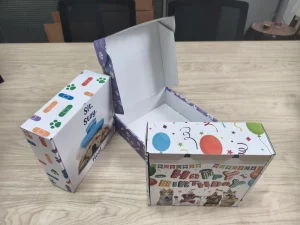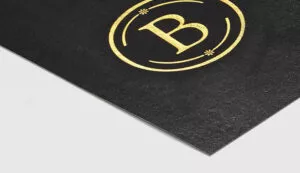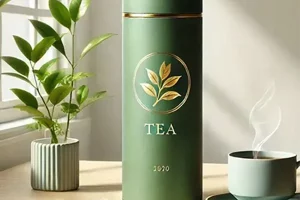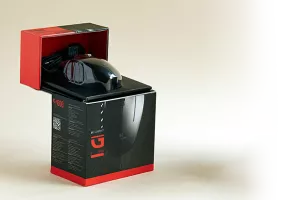Ever wondered what materials are used to make a box? The choice of material can drastically affect the box’s strength, appearance, and functionality.
Boxes are made from various materials, including cardboard, wood, plastic, and metal. Cardboard and paperboard are the most commonly used materials, offering balance between cost, strength, and versatility.

The material choice often depends on the purpose of the box. Let’s explore what makes certain materials better for specific applications.
What is the best material to make gift boxes out of?
Choosing the best material for a gift box is crucial to make sure it looks attractive and offers adequate protection for the contents.
The best materials for gift boxes are often cardboard, paperboard, and specialty papers. These materials offer a blend of elegance and sturdiness while being cost-effective.

When it comes to making gift boxes, cardboard and paperboard are typically the go-to materials. These materials provide an excellent balance of sturdiness and aesthetic appeal, making them ideal for creating high-quality, attractive boxes. Paperboard is lighter than corrugated cardboard, making it an ideal choice for smaller gifts or products. It’s easy to cut, fold, and shape into custom box designs, offering flexibility for creative gift packaging.
Cardboard, on the other hand, is more rigid and thicker, making it better suited for more substantial items or gifts that need additional protection during transit. The strength of cardboard makes it a preferred choice for high-end gift boxes that will be handled multiple times.
For a more premium look, many gift boxes are wrapped with decorative paper or finishes like foil stamping, embossing, or matte coatings. Specialty papers, such as textured or glossy varieties, add a luxurious touch to the box and increase its perceived value.
In conclusion, the best material for a gift box often depends on the type of gift and the desired presentation. Paperboard is ideal for smaller, delicate items, while cardboard is better suited for heavier or more expensive gifts.
What is a cardboard box for holding goods called?
Cardboard boxes come in many forms, but what do you call the specific type used for holding goods during transportation or storage?
The cardboard box used for holding goods is commonly called a "shipping box" or "carton." These are typically made from corrugated cardboard for added durability.

The term "shipping box" or "carton" refers to a cardboard box designed specifically for holding goods during transit or storage. These boxes are typically made from corrugated cardboard, which consists of three layers: two flat outer layers and a fluted layer in between. This structure gives the box added strength and protection, making it ideal for shipping a variety of products, from elettronica to food.
Shipping boxes come in many sizes and shapes, depending on the items they are meant to hold. These boxes can be custom-sized to fit specific products, or they may follow standard sizes to accommodate a wide range of goods. The fluted layer within the corrugated cardboard acts as a cushion, protecting fragile items from damage during transit. This feature is especially important when shipping items that need to be protected from external pressure, such as glassware or electronics.
In addition to shipping boxes, cartons are also used for storage. They help businesses organize products in warehouses and retail environments. Cartons are sturdy and lightweight, making them a practical choice for bulk storage. Many companies opt for corrugated cartons because they can be recycled and reused, making them an eco-friendly option.
In conclusion, a "shipping box" or "carton" is a versatile cardboard box designed to hold and protect goods during transportation or storage.
What do you put in the bottom of a gift box?
When preparing a gift box, it’s not just about the gift itself. What do you put in the bottom of a gift box to add that extra touch?
To enhance the presentation of a gift, you can use tissue paper, crinkle paper1, or foam inserts in the bottom of the box. These provide both cushioning and a decorative element.

When preparing a gift box, it’s important to think about both the aesthetic and functional elements. Adding something to the bottom of the box helps cushion the gift and prevents it from shifting around during transport. Tissue paper, crinkle paper, and foam inserts2 are common choices for this purpose.
Tissue paper is a classic and elegant choice. It adds a soft touch and is often used to wrap the gift itself as well. Tissue paper comes in a variety of colors, allowing you to match the packaging to the occasion, whether it’s a birthday, holiday, or special event. The paper can also be crumpled or folded at the bottom of the box to create a cushion for fragile items.
Crinkle paper is another popular option. It provides a bit more texture and volume than tissue paper3, making it an excellent choice for filling up space in larger gift boxes. Crinkle paper can also add a fun, playful look to the packaging, especially when used in bright colors.
Foam inserts are ideal for heavier or more fragile items. These inserts offer extra protection and can be cut to fit the shape of the gift, ensuring it stays in place. They are often used in high-end gift boxes or when shipping delicate products, like jewelry or electronics.
In conclusion, choosing the right filler for the bottom of a gift box is essential to both protect the gift and enhance its presentation.
How to make your own gift box?
If you’re looking to add a personal touch to your gift-giving, making your own gift box is a creative and fun way to go about it.
Making your own gift box involves selecting the right materials, measuring, cutting, and folding the box. It can be a rewarding DIY project that adds a personal touch to any occasion.

Making your own gift box can be a fun and rewarding DIY project that allows you to personalize the box to match the occasion. The process typically starts with selecting the right materials. You can use cardboard, paperboard, or even decorative cardstock, depending on the size and sturdiness of the box you need.
Once you’ve chosen the material, the next step is to measure and cut the pieces for the box. You’ll need to measure the length, width, and height of the box, as well as the flaps and lid. To make sure the box folds neatly, use a ruler and a craft knife or scissors to cut the edges precisely. For a simple box, you can use a regular box template or create your own design.
After cutting, fold the edges of the cardboard to form the shape of the box. Use glue, double-sided tape, or a stapler to secure the flaps and edges in place. If you’re looking to make the box more decorative, you can add embellishments such as ribbons, stickers, or hand-painted designs.
To add cushioning and enhance the presentation, line the inside of the box with tissue paper, crinkle paper, or fabric. This adds both protection and a luxurious feel to the packaging.
In conclusion, making your own gift box is a simple but effective way to add a personal touch to any gift. It’s a fun, customizable project that allows you to express creativity.
What is the best cardboard for gift boxes?
Selecting the best cardboard for gift boxes is key to creating a sturdy, stylish, and functional gift package. What type of cardboard is ideal for this purpose?
The best cardboard for gift boxes is typically paperboard, as it’s lightweight yet durable. For higher-end gift boxes, you may want to use rigid cardboard for added luxury.

The best type of cardboard for gift boxes largely depends on the desired look, durability, and the type of gift being packaged. Paperboard is often the top choice for standard gift boxes because it’s lightweight and flexible, making it easy to cut and fold into various shapes. It offers sufficient strength for holding smaller to medium-sized gifts like jewelry, cosmetics, or stationery.
For more luxurious or heavier gifts, rigid cardboard is a better choice. Rigid cardboard is thicker and denser, giving the box a sturdier, more premium feel. It’s often used for high-end packaging, such as luxury watches, fine perfumes, or expensive electronics. Rigid boxes are durable and offer superior protection to the contents, which is important for valuable gifts.
Another important factor when selecting cardboard is the finish. You can opt for uncoated cardboard for a more rustic look, or choose a glossy or matte finish to make the box look more polished. Many gift boxes are also coated with metallic or textured paper for added elegance.
In conclusion, for most gift boxes, paperboard is the ideal choice, but for heavier or more luxurious gifts, rigid cardboard offers a more refined solution.
Conclusione
The material used to make a box affects its strength, presentation, and functionality. Choosing the right material for your packaging needs is key to creating the perfect box for any occasion.
-
Learn how crinkle paper can add texture and fun to your gift packaging by visiting this resource. ↩
-
Find out how foam inserts provide protection and style for your gifts by checking this informative link. ↩
-
Explore this link to discover creative ways to use tissue paper for enhancing your gift presentation. ↩








